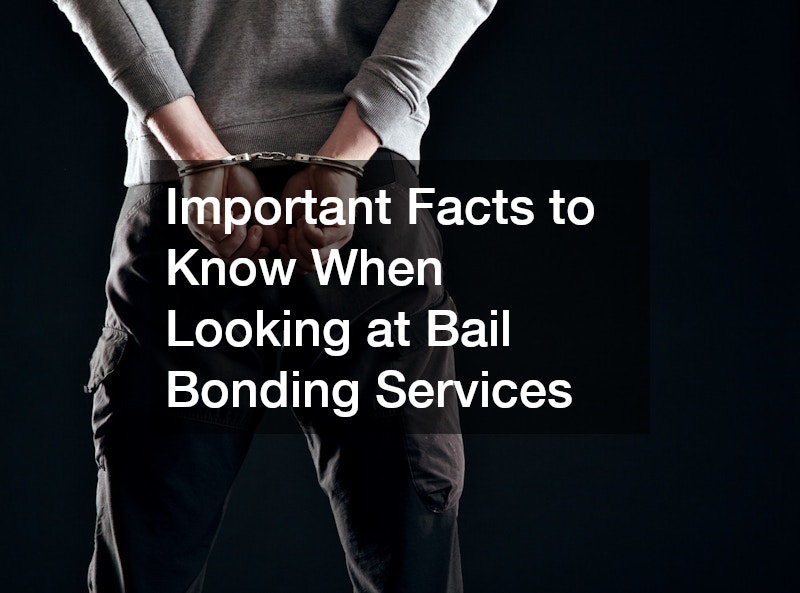Understanding bail bonding services is crucial for anyone navigating the criminal justice system. Here, we explore the key aspects of bail bonding that everyone should be aware of, from the process involved to the costs and legal implications. This knowledge can be beneficial whether you’re helping a loved one or simply seeking to understand your rights.
How Do Bail Bonding Services Work?
The Bail Bond Process
The bail bond process commences immediately after an individual is arrested. It begins with the setting of bail by the court, which is an amount designed to ensure the defendant returns for trial. Following this, a bail bondsman provides the funds to secure the defendant’s temporary release.
Upon arrest, the defendant or their representatives can approach a bail bond agency. The agency evaluates the situation and extends a bond in exchange for a non-refundable fee, usually a percentage of the bail amount. The involvement of a bondsman means that the accused can await trial outside of jail.
Once the bond is posted, the defendant is released, but the responsibility to appear in court remains. It is imperative for defendants to attend all court dates; failure to do so can result in bond revocation.
Types of Bail Bonds
Bail bonds can be categorized into several types, each suited to different situations. Cash bonds require the full amount of bail to be paid in cash. Surety bonds, the most common type, involve a third party, usually a bail bondsman, who assures the court the defendant will appear.
Property bonds involve using real estate properties as collateral to secure a bond. This type necessitates that the value of the property be substantial enough to cover the bail amount. It may take longer to process due to the valuation and paperwork required.
Another type is the recognizance or signature bond, typically available for defendants deemed low-risk or unlikely to flee. This type requires no payment, as it is based solely on the defendant’s promise to appear in court.
Roles and Responsibilities
The bail bond process involves distinct responsibilities for the defendant, the co-signer, and the bondsman. The defendant must comply with court requirements, including attending all scheduled hearings. Failure to appear can lead to arrest warrants and financial consequences for both the defendant and the co-signer.
The co-signer, often a friend or family member, assumes a significant financial risk. They guarantee the defendant will meet their obligations by agreeing to cover the full bond amount if the defendant fails to show up in court. This role includes a commitment to help guide the defendant through the process, ensuring adherence to court requirements.
The bondsman facilitates the bail process and offers expertise and advice. They assess the risk involved and decide whether to issue the bond after reviewing the defendant’s case.
What are the Costs and Risks Involved with Bail Bonds?
Understanding Bail Bond Fees
Standard bail bond fees are typically a percentage of the total bail, often around 10%. These fees are non-refundable, serving as the bondsman’s earnings for assuming the risk. Flexibility in payment plans can be crucial for those unable to afford the fee upfront, providing options to meet financial constraints.
While fees are non-refundable, a defendant’s compliance with court appearances ensures the bond stays intact. If a defendant fails to appear, the co-signer could forfeit any collateral they provide. Most bail bond services offer payment plans to ease the financial burden on families seeking assistance.
Understanding the refund policy is crucial, particularly in situations where the court reduces bail amounts or dismisses charges. Any changes to the bail amount after the bond is posted don’t typically affect the premium paid.
Collaterals and Indemnity Agreements
Collateral serves as a form of security for the bail bond agency, ensuring they recover losses if the defendant fails to meet court obligations. Common forms include property deeds, car titles, or other assets of value equivalent to or exceeding the bail amount. Providing collateral adds a layer of assurance for the bondsman.
Indemnity agreements formalize the responsibilities of the co-signer, certifying their understanding of financial liabilities. These agreements protect the bail bond company from losses incurred due to non-compliance by ensuring compensation for unpaid premiums or forfeited bail amounts. The responsibility of the co-signer is emphasized through legal documentation.
For co-signers, understanding these agreements is vital to assess the financial risks involved. Should the defendant fail to maintain their court obligations, the co-signer becomes liable, risking their pledged collateral.
Risks of Using Bail Bond Services
Engaging bail bond services introduces financial risks, particularly if the defendant fails to appear in court, leading to bond forfeiture. Co-signers may lose collateral or become responsible for additional penalties if obligations aren’t met. Risk assessment should be woven into decision-making processes, weighing benefits against potential loss.
Aside from financial concerns, defendants face risks regarding restrictions associated with bail terms, such as travel limitations or required check-ins. Failure to adhere may result in revocation, returning the defendant to custody. Each condition must be fully understood and adhered to.
Legal implications also emerge if fraudulent actions or misrepresentations occur within the bond procurement process. Engaging with licensed and reputable bail bond services mitigates this risk.
Bail bonding services provide a critical bridge for individuals seeking temporary release while awaiting trial. By understanding how these services operate, the costs involved, and the potential risks, individuals can make informed decisions during a challenging time. It is always advisable to consult with legal professionals to ensure the best possible outcome.
.

